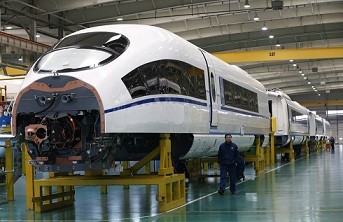The construction of high-speed railways and subway lines is expected to bolster China's urban development and the development of city clusters, as well as lay the foundation for a second economic development in the country, the China Business News reported.
Wang Ming, director of the Institute of Comprehensive Transportation under the National Development and Reform Commission (NDRC), said that the construction of the railway systems will play a bigger role than the property market, as the country will need to build more than the 6,000 kilometers of rail networks under its 12th Five-Year Economic Development Plan.
At present, China's total subway network is expected to extend to 6,000 km by 2020, as 39 cities around the country have met the stipulated criteria for subway construction.
Wang said at a transport forum held recently that an estimated 4 trillion yuan ($625 billion) will be spent in urban subway construction.
The railway construction market is estimated to be worth 10 trillion yuan ($1.57 trillion).
Li Guoyong, an NDRC official, said that with the rapid urbanization, urban transit systems will provide natural solution to traffic congestion, not only in first-tier cities but also in second- and third-tier cities.
Li said that as the number of cities with a population of more than 1 million is expected to rise to more than 200 by 2020, the urbanization rate is also expected to exceed 60 percent by that period.
This would require the government to speed up construction of the railway systems in cities to improve urban traffic flow, Li Puming, a spokesperson at the NDRC, said.
Li added that investment in urban rail transit this year is expected to reach 300 billion yuan ($47 billion), exceeding last year's 285.7 billion yuan ($45 billion).
According to the guidelines on the development of urban rapid rail transit systems issued by the State Council in 2003, cities can qualify for an urban transit system if they have a population of over 3 million and a GDP of more than 100 billion yuan ($15.7 billion).




























